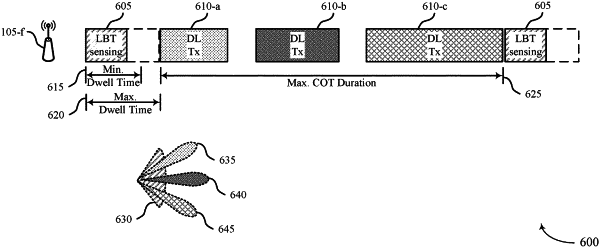| CPC H04W 74/0808 (2013.01) [H04W 74/0816 (2013.01)] | 27 Claims |

|
1. An apparatus for wireless communications, comprising:
a processor,
memory coupled with the processor; and
instructions stored in the memory and executable by the processor to cause the apparatus to:
gain channel access to a wireless channel in a shared radio frequency spectrum based at least in part on a first listen before talk procedure that indicates the wireless channel is unused by one or more other transmitters, wherein the first listen before talk procedure provides the channel access for a maximum channel occupancy time duration;
transmit, responsive to gaining the channel access, a first communication to one or more receiving devices via the wireless channel during the maximum channel occupancy time duration;
discontinue transmitting via the wireless channel subsequent to the first communication for at least a duration of a transmission gap;
determine that the transmission gap is less than a threshold transmission gap duration; and
transmit, subsequent to the transmission gap and in an absence of a second listen before talk procedure, a second communication to the one or more receiving devices during the maximum channel occupancy time duration;
wherein the second communication is transmitted in the absence of the second listen before talk procedure responsive to the transmission gap being less than the threshold transmission gap duration.
|